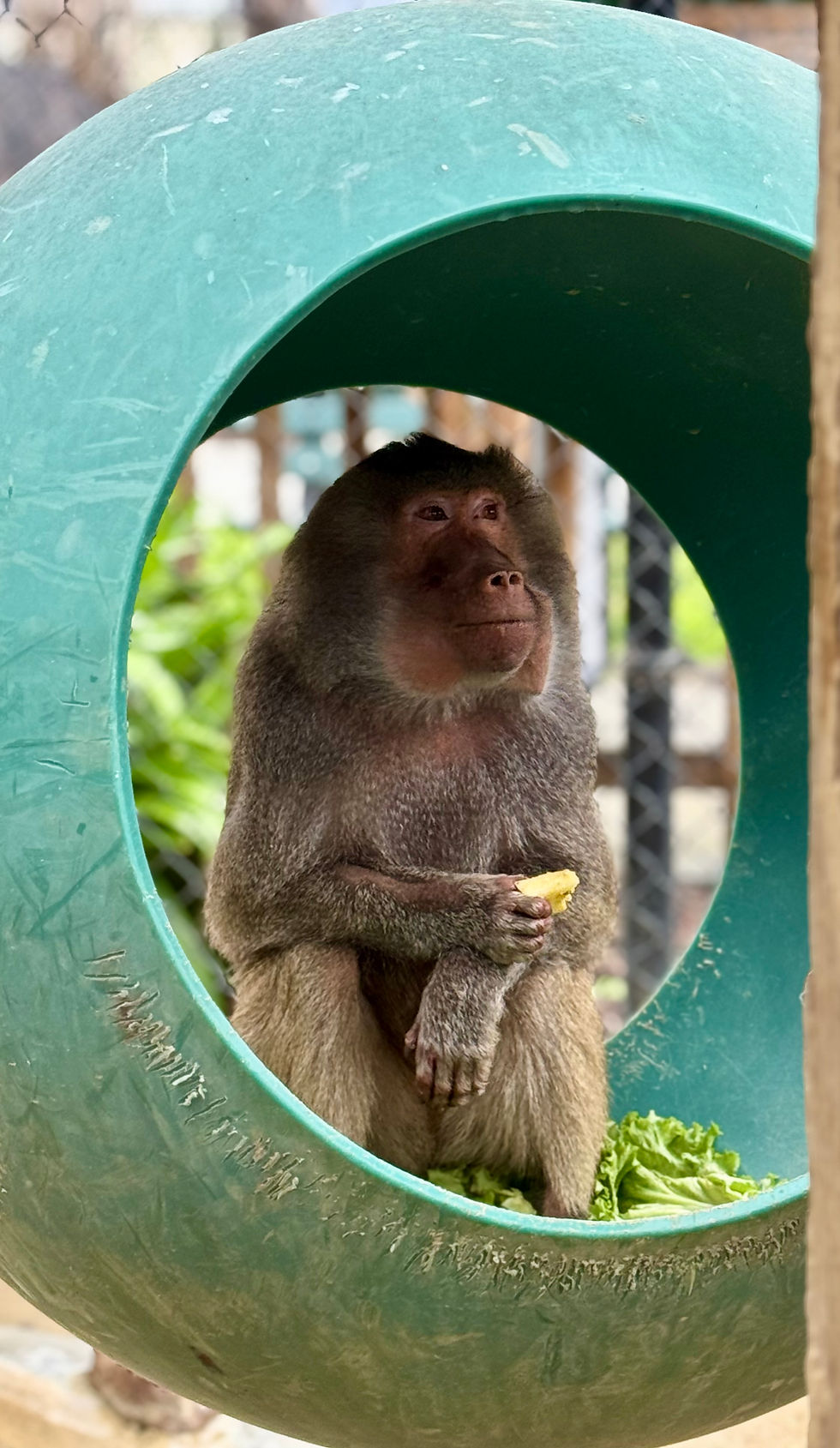

Primates
Primates are characterized with flexible hands and feet with opposable first digits (like thumbs-sometimes on both hands and feet), well developed binocular vision, and a more highly developed brain. Monkeys, marmosets, Lemurs, apes and humans are all considered primates. Although many other scientific descriptions define a primate, there are over 300 species in the order of primate!
Lemurs
Lemurs are small primates native only to the island of Madagascar and the neighboring Comoro Islands. A group of lemurs usually has one dominant female who leads the group, controls their movement, and has first choice of food and mates. Madagascar’s lemurs are one of the most endangered animals on the planet. Conservationists say the destruction of tropical rain forests due to illegal logging and hunting, as well as the farming of vanilla, has pushed the primates to the brink of extinction. Lemurs live in groups called “conspiracies”. With over 100 species of lemurs, Monterey Zoo’s conspiracy consists of Black & White Ruffed lemurs, Red-Ruffed Lemurs and Ring-tailed Lemurs.



Capuchin Monkey
Monkeys can be considered “old-world” or “new-world” monkeys. Monkeys that are native to North-Central and South America are considered new-world monkeys. (Moneys native to Asia and Africa are considered old-world monkeys.) Capuchin Monkeys are in fact new-world monkeys, found in the Northern parts of Argentina. They are also scattered around North America and South America. They only live in the trees, and they only are active during the day. They are smart and can be aggressive when it comes to their territory. They socialize in small groups and can be vocal – hard to miss when the Capuchin monkey makes some noise! They have a prehensile tail that they can manipulate all the way to the tip like a finger to grab and hold things. Monterey Zoo houses both tufted Capuchins and blk & wht Capuchin monkeys Although all our up in age, they still maintain very special relationships with their keepers at Monterey Zoo.

Squirrel Monkey
Squirrel moneys are also new-world monkeys from South and Central America. Living high in the canopy of the rain forests, they, like Capuchin monkeys are omnivores eating fruit, leaves and insects. Squirrel monkeys do not have a prehensile tail, it can only be used to balance with. Popular as pets in some areas, Monterey Zoo can’t stress enough that these animals do not make good pets as they will quickly become aggressive if not handled professionally and often. We urge all to get their “monkey fix” by volunteering at zoos where they can become monkey keepers. Our two squirrel monkeys, Pip and Penny, came to us from private owners in Southern California. Both are contribute greatly to our education and conservation programs.

Baboons
Being from Africa, baboons are old-world monkeys. They do not have a prehensile tail and are known to be more of a ground dwelling monkey. There are five different species of baboons. All of them live in Africa or Arabia. Baboons are some of the world’s largest monkeys, and of all the primates in East Africa, most frequently interact with people. Intelligent and crafty, they often forage in agricultural fields. The baboons see easy food, but farmers consider them pests. They live in groups called troops. The baboon troop at Monterey Zoo arrived at different times, from different situations, at different ages, so the introductions to each other have been noisy at times but so far, very successful. We currently house two females, who have fast become the best of friends. Both are very close to their keepers here at Monterey Zoo.


Primates Palace
Experience the wonder of Primates Palace, a haven where playfulness reigns and monkeying around is the order of the day! Our engaging primates will capture your heart with their charming personalities and lively interactions. This vibrant habitat is perfect for anyone seeking fun and adventure in a delightful setting. Visit us and enjoy the excitement today! Be sure to check out our continuing Habitat Improvements also!



Zoo Map

